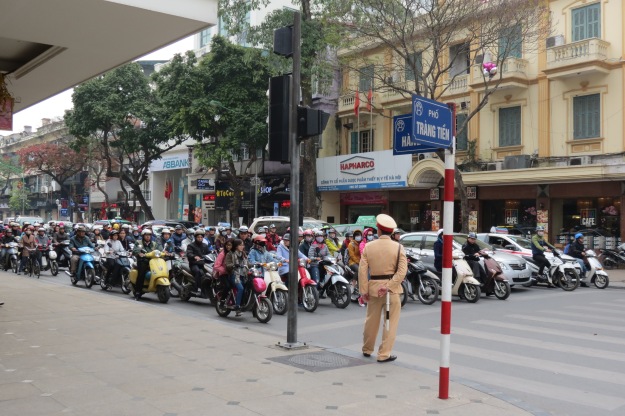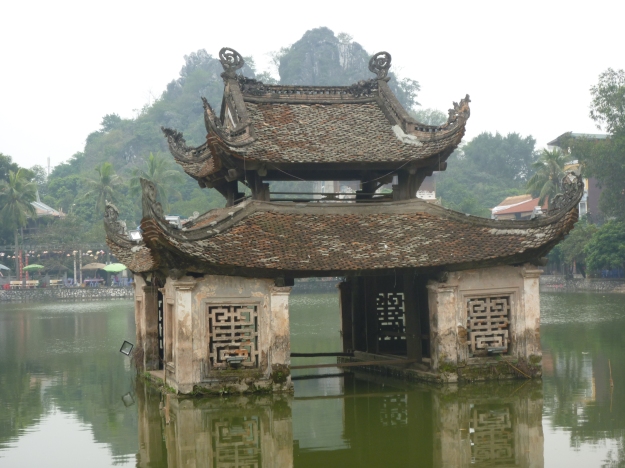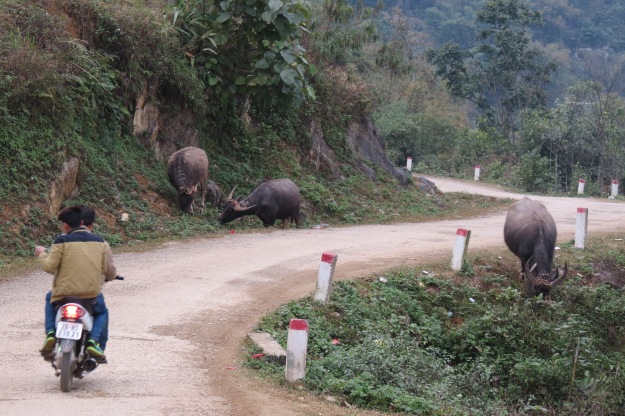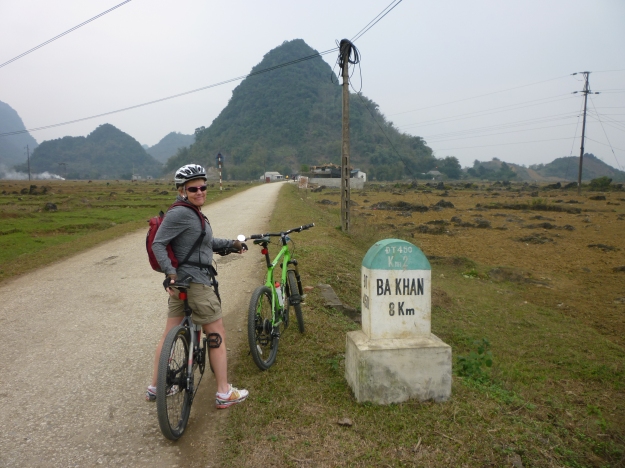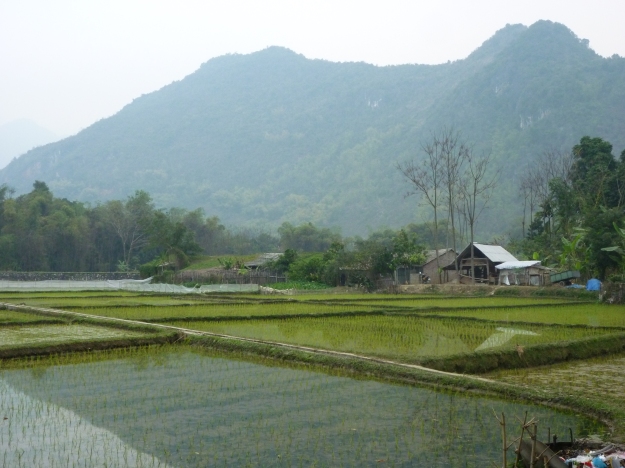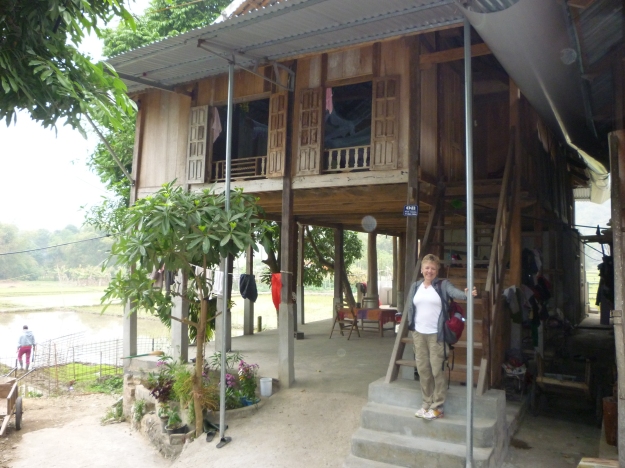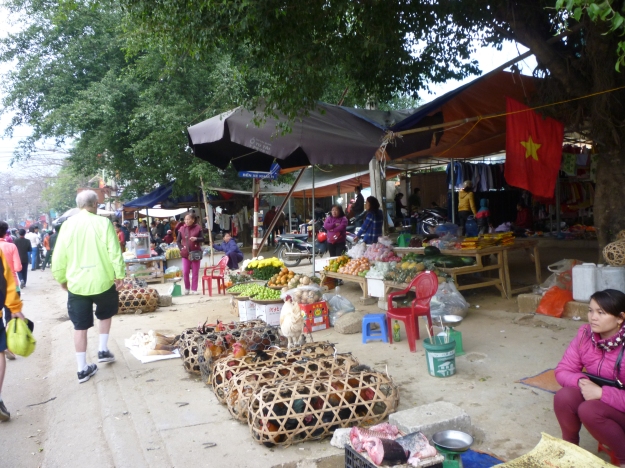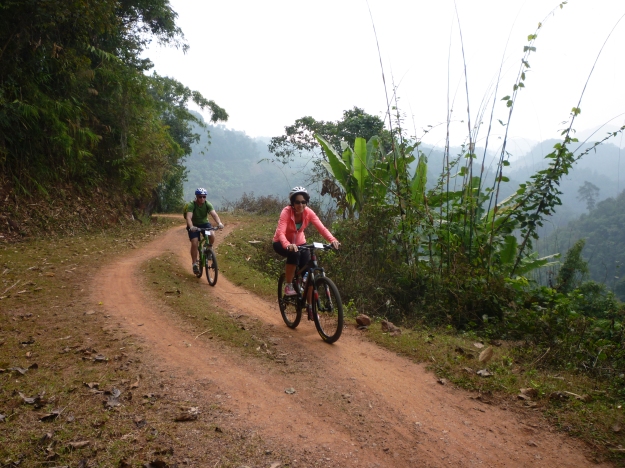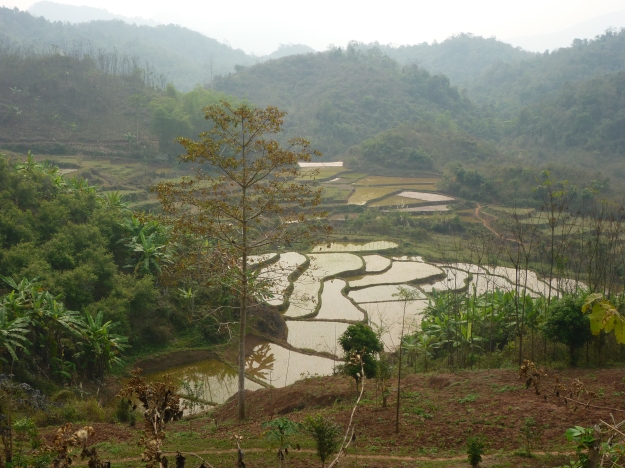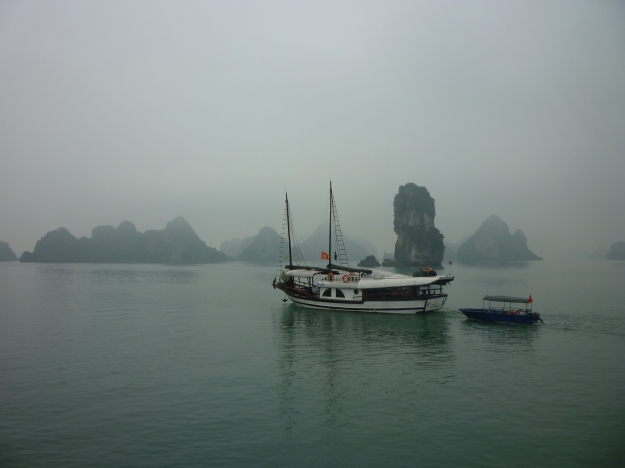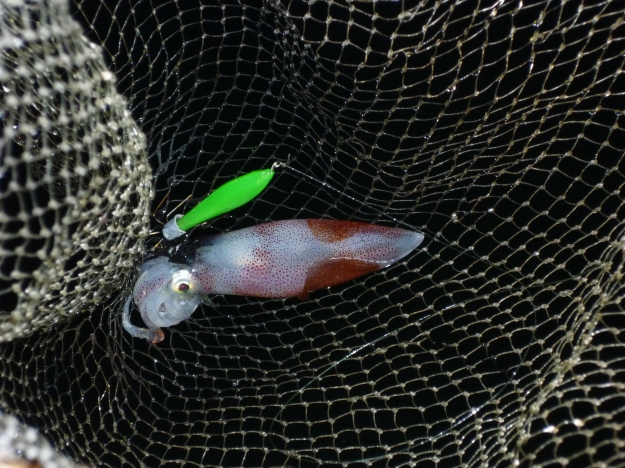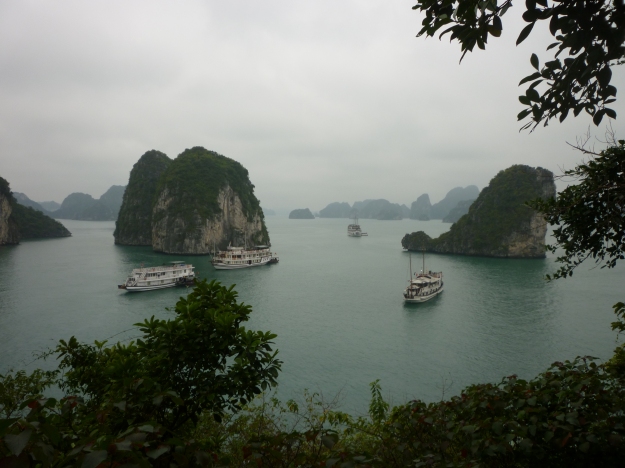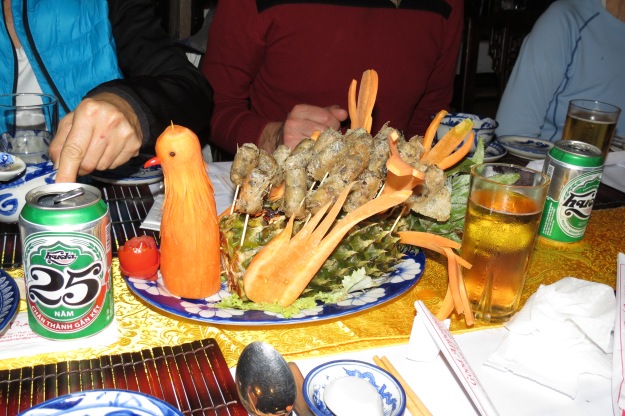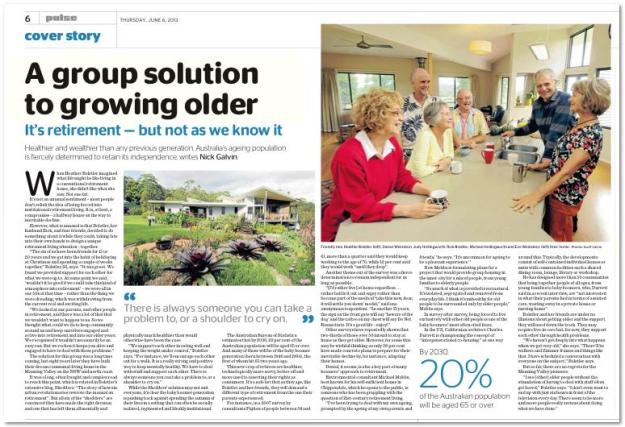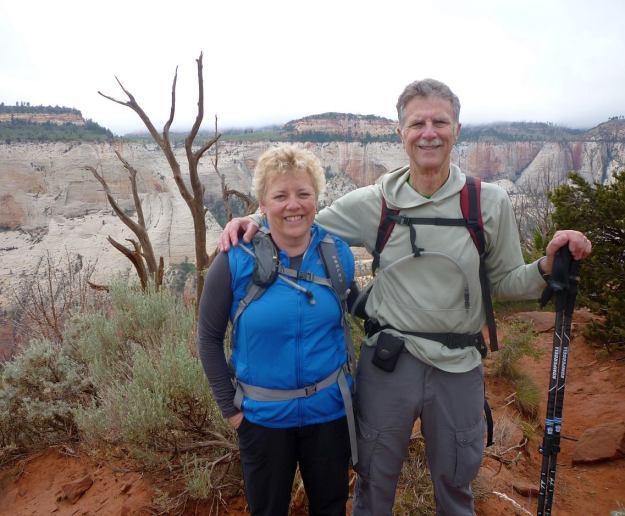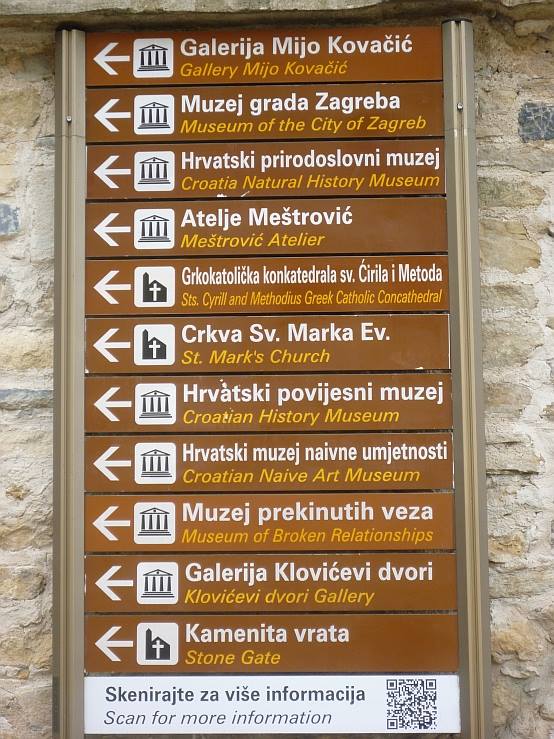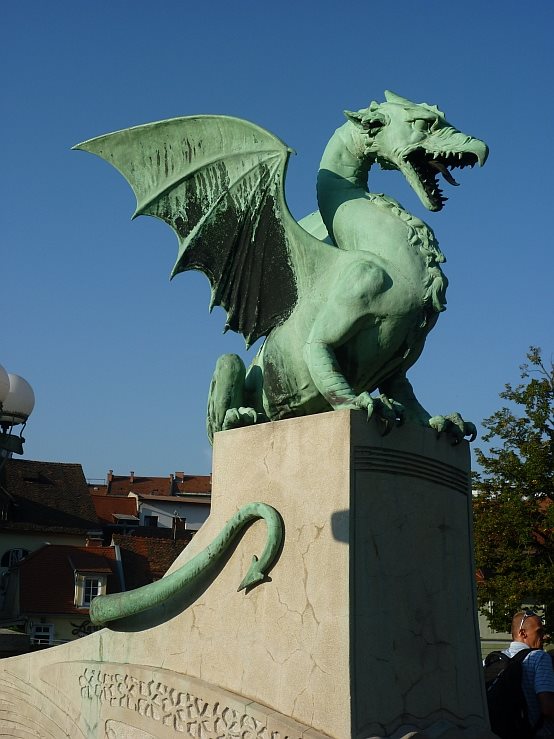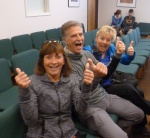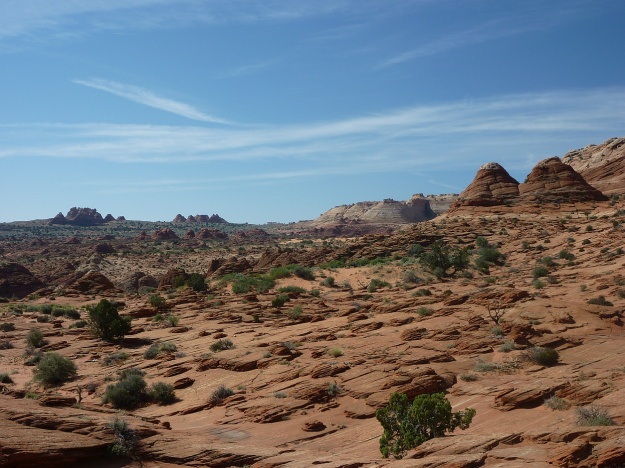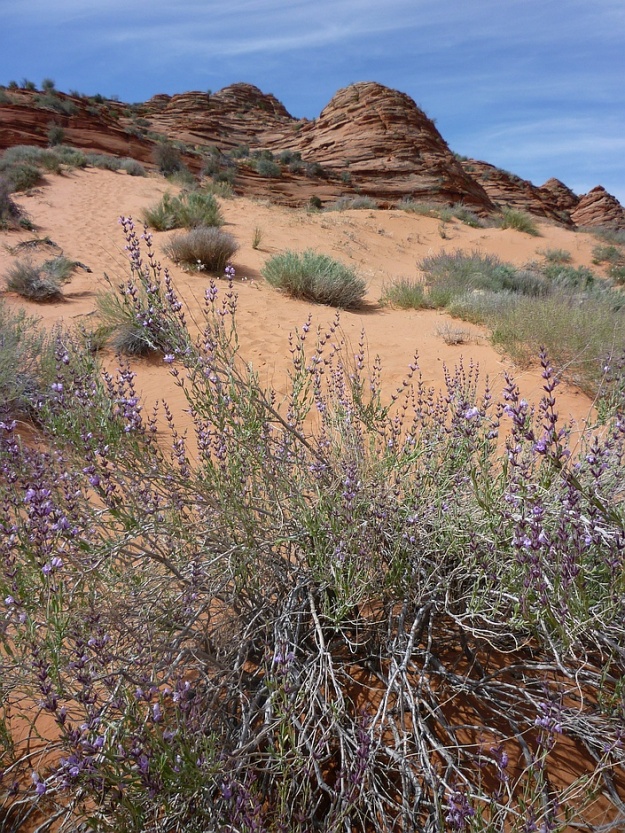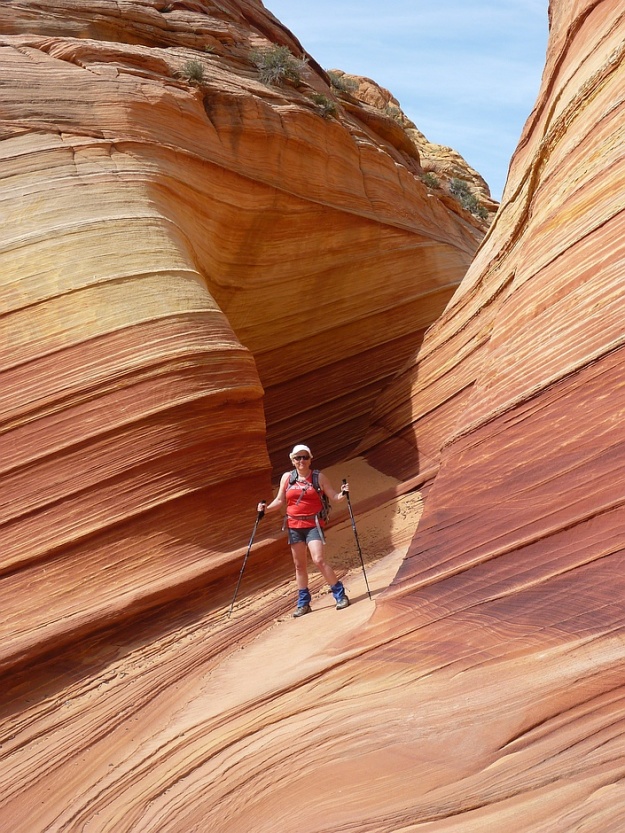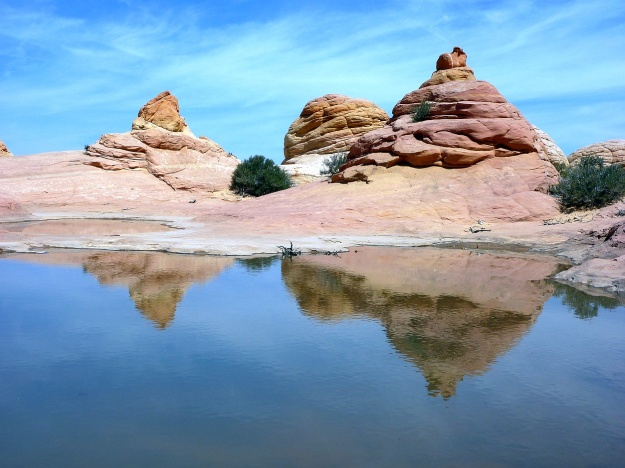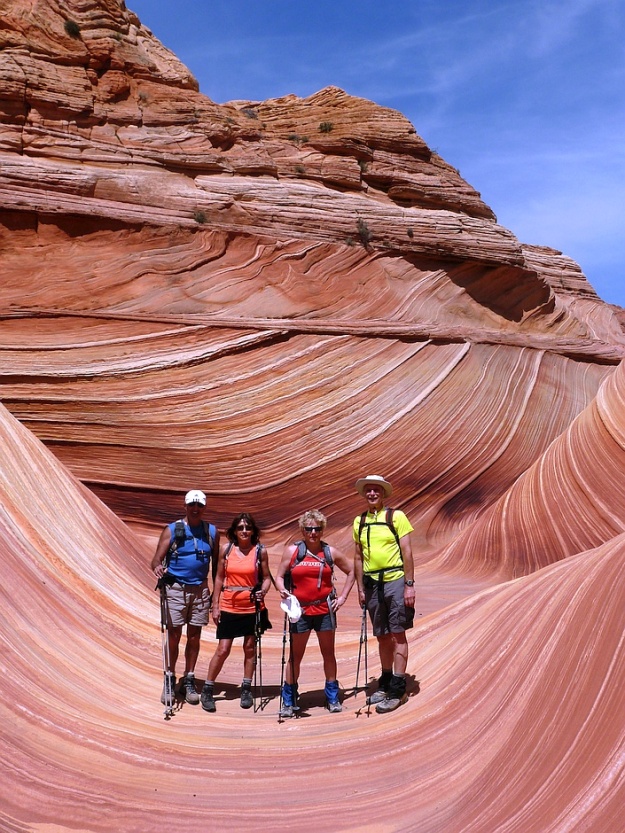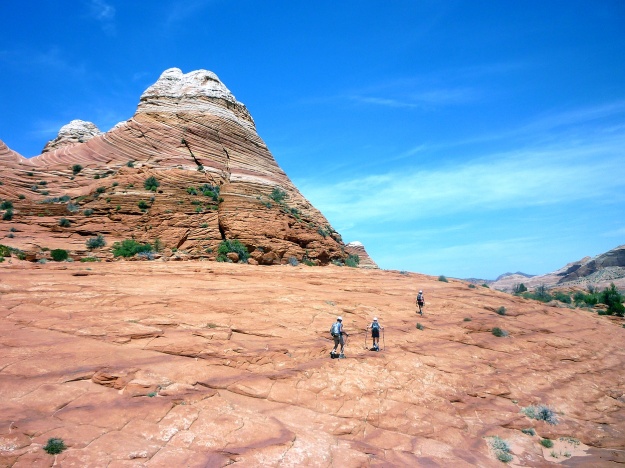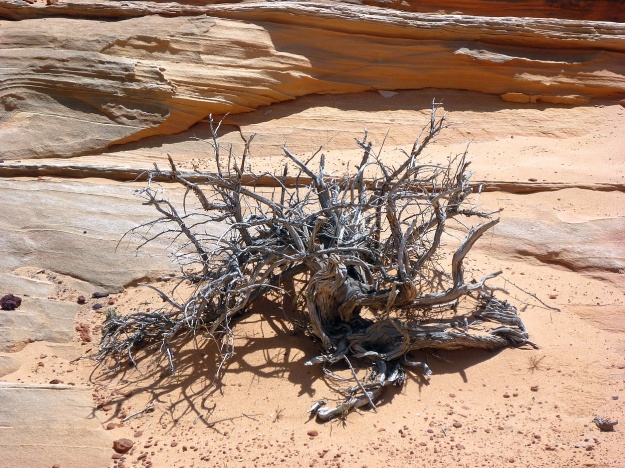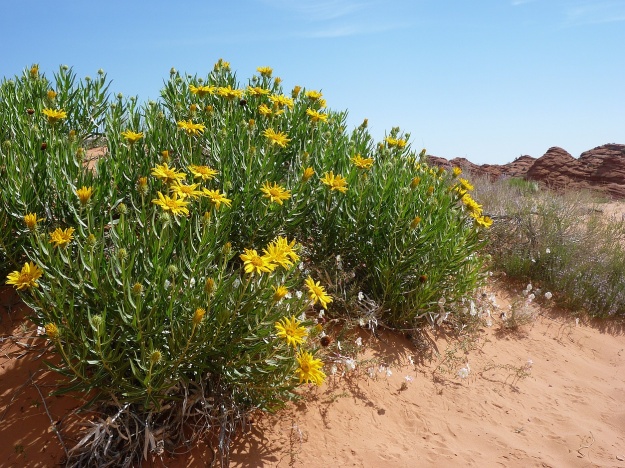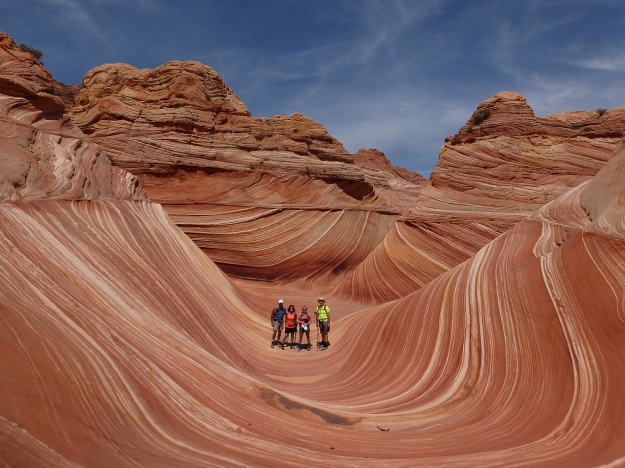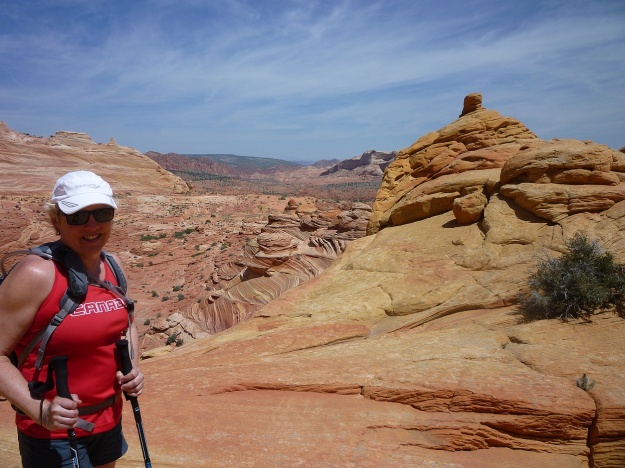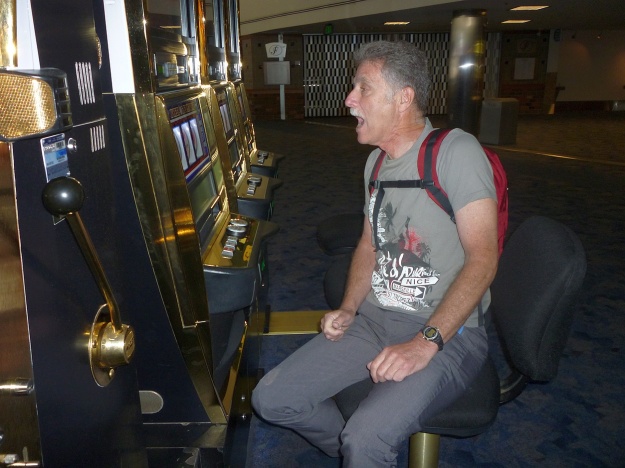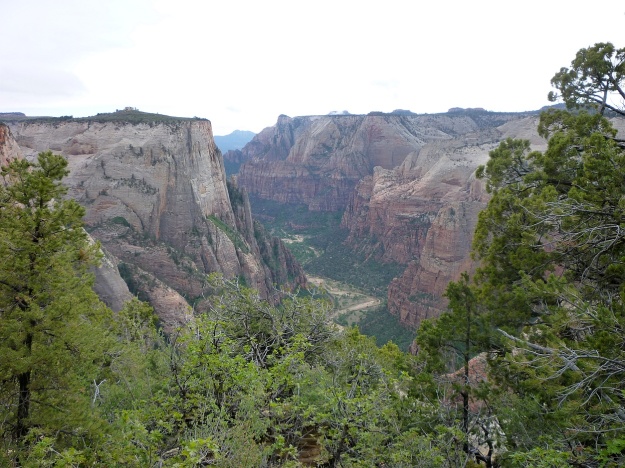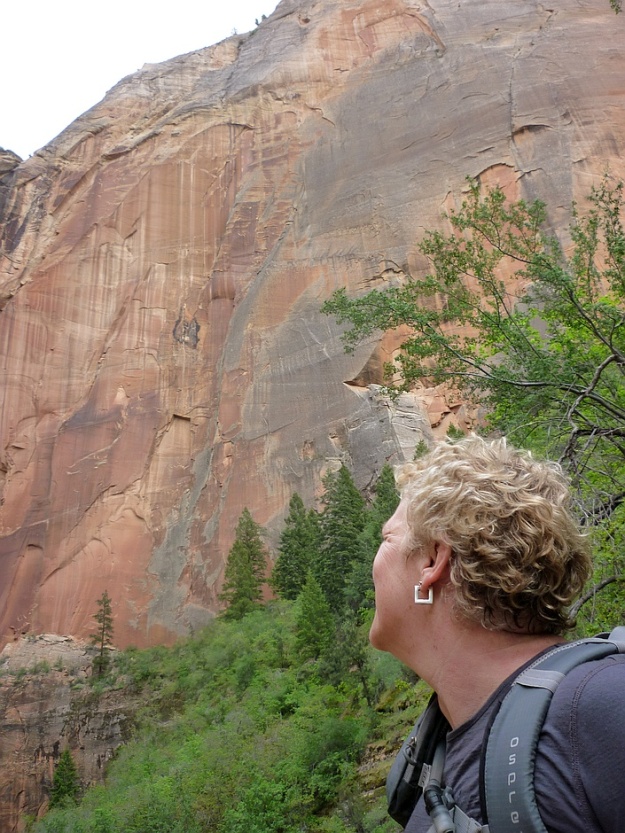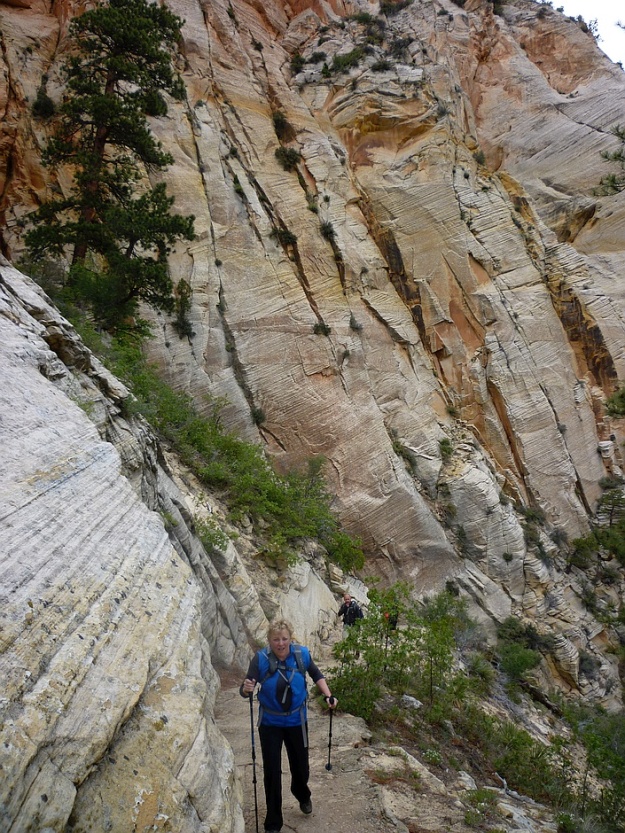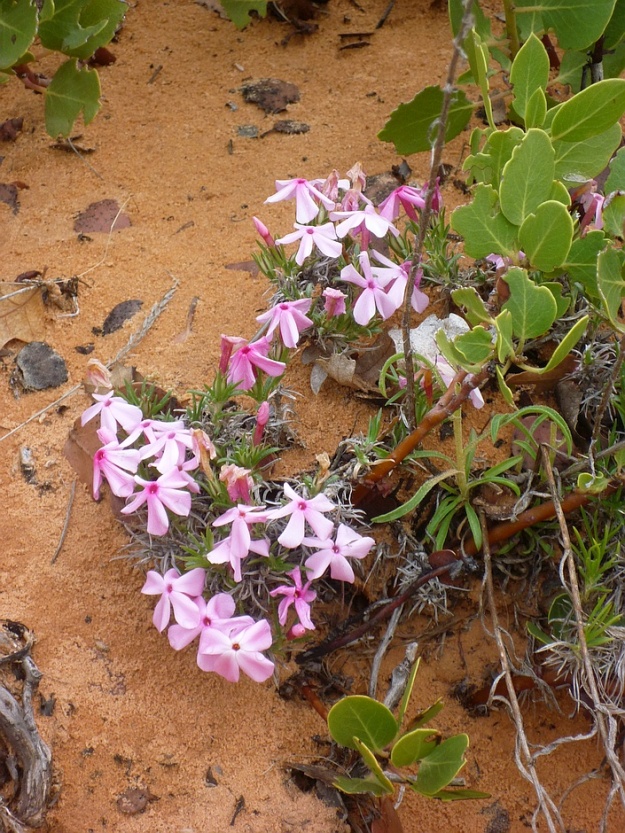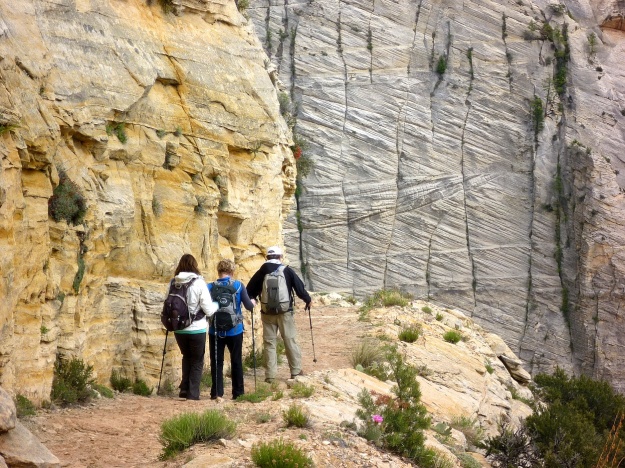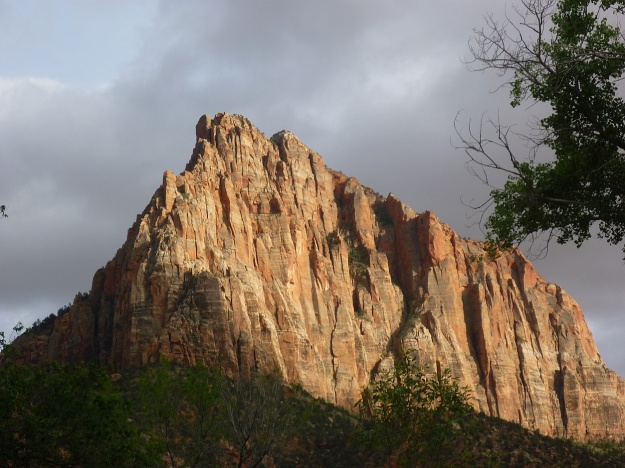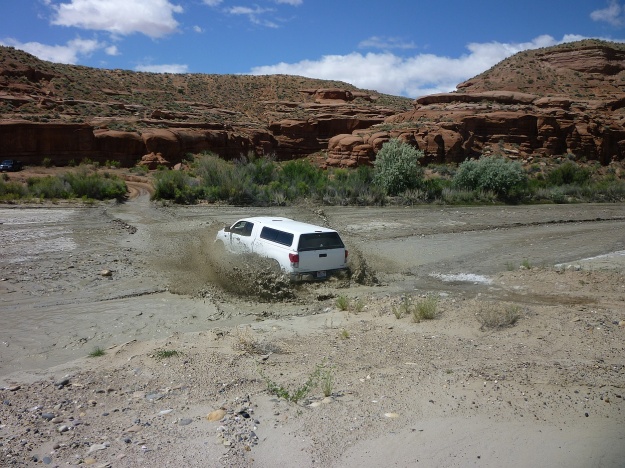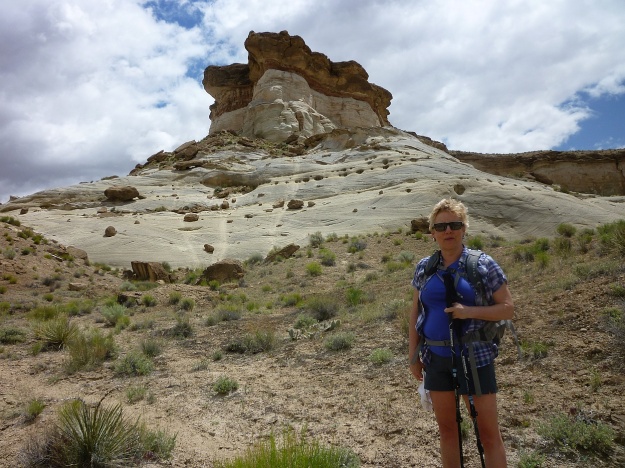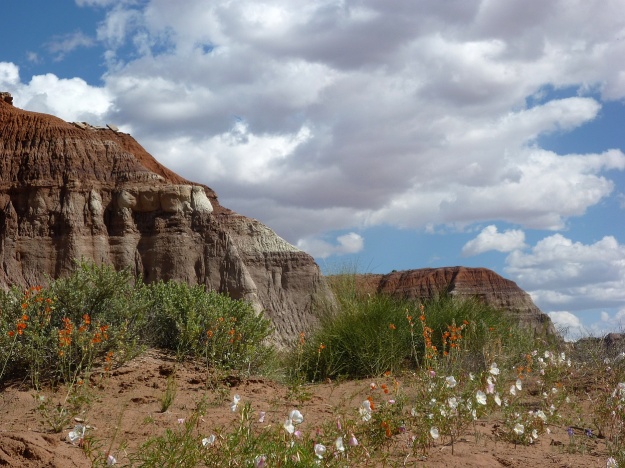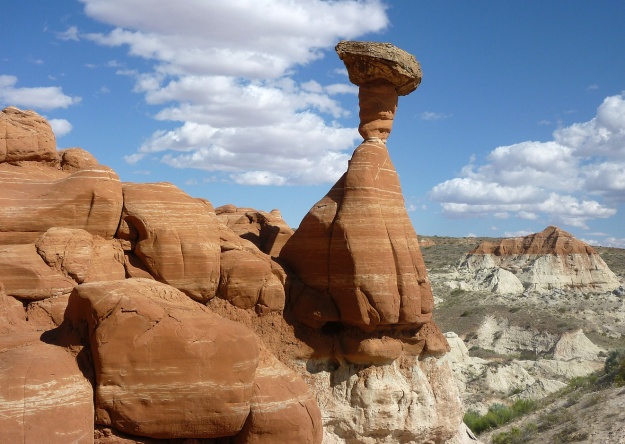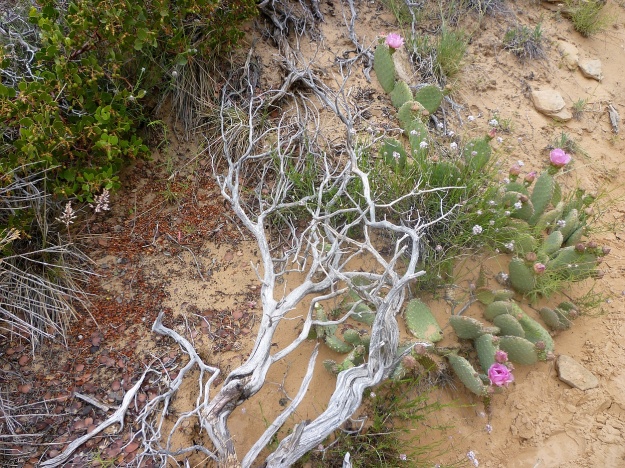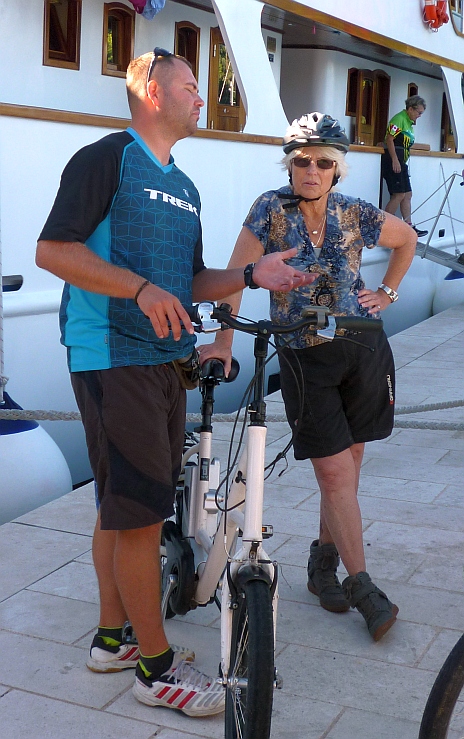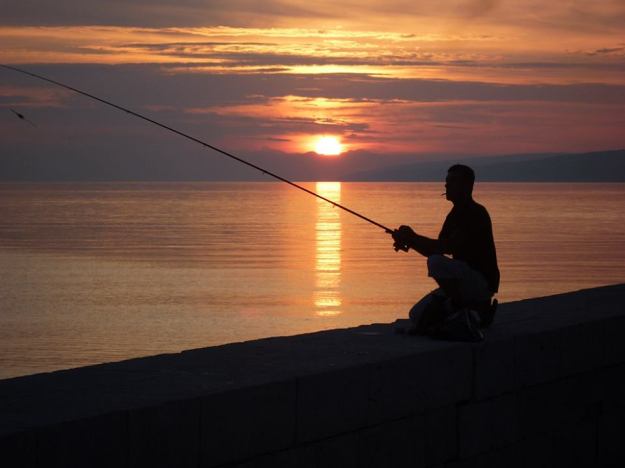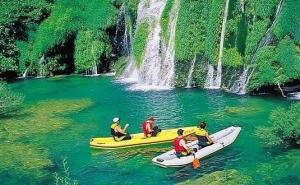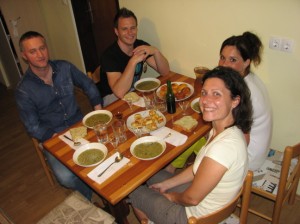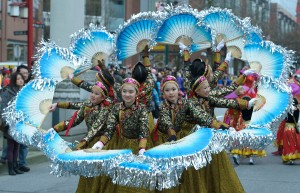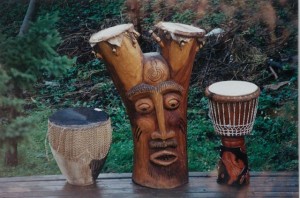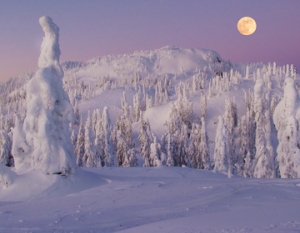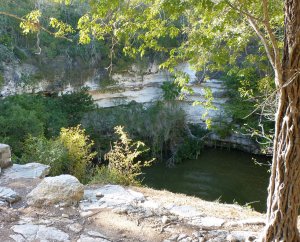Our two week tour of Vietnam proved a great experience. While we only cycled a few hundred kilometers on nine days of cycling, the mix of activities fit the conditions we encountered. For instance, the two days devoted to Ha Long Bay did not involve cycling, nor did our day in Ho Chi Minh City (Saigon.)
Our experience of Vietnam and its people was very positive. We had three different sets of drivers and guides – for the three separate regions – and all of them were helpful, experienced, interesting, and personable. All of our hotels were clean, comfortable, and endowed with good breakfasts. The personnel were courteous and helpful. The included meals at chosen restaurants were tasty and copious, if sometimes repetitive. Overall this trip was “two thumbs up.”
So, should you do this trip? And if so, what might you need to know beforehand? Here are a few thoughts. Some we learned ahead of our departure; some we wished we had.

So many colourful occasions
Should you do this trip?
If this is your first cycle trip overseas, Vietnam may not be the best place to start. Vietnam’s travel infrastructure is not as well developed as locations like northern Europe. You’ll be more exposed to traffic with unfamiliar rules. Our day cycling in Hanoi was not for everyone – although we wouldn’t have missed it. Language challenges may be greater here – important should you get separated from your group. The different cuisine could leave you battling a stomach bug on a ride, and facilities are often hard to find. But if you’ve got a few tours under your belt, and are looking for more culture, history, and different landscapes, then we’d highly recommend the tour we took.

You might meet one of these in the middle of your path. (Photo by Rob Mudie)
Best Time to Go
Using climate sites, we determined that February is generally the driest, coolest month of the year, and the average temperature is good for cycling. However, averages can be deceiving. On our own tour, it was 60F (16C) in the north, and 95F (35C) in the south. Most of the time it was cloudy and misty, and in central Vietnam it rained non-stop for two days. However, two weeks later, some friends enjoyed blue skies all the way. So, we still think February and March are good bets, as long as you avoid the holiday rush at Tet – usually over by mid-February, occasionally a bit later.
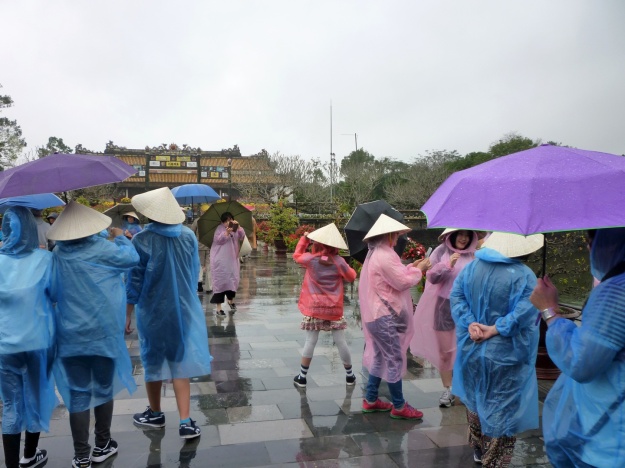
Even rainy days are included in a sunny average.
Visas, Vaccinations, Medications & Trip Insurance
Finding online information about visas was challenging. There are a plethora of companies offering to help get you a Vietnam visa for a fee, and it’s sometimes hard to tell what’s legitimate. In end, Cheryl and I opted to leave our passports at the local Vietnam consulate for a few days. Others in our group were happy using the services of a local travel company specializing in Vietnam.
Vaccinations were another matter. This is a complex subject, and a lot comes down to your assessment of the risks versus costs. We all updated our basic travel inoculations, but we fretted over rabies and Japanese encephalitis. Different members of our group got different advice from different travel clinics. How big is the risk? Frankly, it’s small for both diseases. Still, losing the gamble would not be fun. Some in our group opted for both. Cheryl and I elected just to be cautious about mosquitoes, which can spread more than just encephalitis. As for rabies, we found a local doctor who offered much cheaper rabies shots provided we came in as a group; the cost saving came from a technique developed by the WHO. The lower price tipped the scale for us. Our decision was reinforced when a friend was bitten by a dog in Cambodia; she underwent the full post-bite inoculation series upon her return to Canada.
Advised by a conservative doctor, we also had prescriptions for anti-malarial drugs and antibiotics, loads of insect repellent, and even a set of clothing impregnated in pyrethrins. To our surprise, during our two weeks in Vietnam surrounded by flooded rice paddies, we never saw a mosquito, and so left most of our supplies untouched. We did run out of some common medications like decongestants; Paul reacted badly to the smoky air that seemed to blanket the country. However, we easily replenished our supplies locally.

Flooded paddies all around, but no mosquitoes to be found.
For the first time, we elected to take the Dukoral oral vaccine against traveler’s diarrhea. Traveling friends swore by it. Still, the jury’s out on how effective it was. We used bottled water, even for teeth-brushing. We stuck mainly to the tour-sponsored restaurants and didn’t indulge in street food, although we ate salads freely. Had we slipped up, we were prepared to follow a questionable meal with Pepto-Bismol and a stiff drink – again, as advised by our travel doctor. But, despite eating a wide variety of dishes from set menus, no one in our group had any problems. So we didn’t really need that rice wine with snakes in it.
We also bought travelers’ health insurance for our trip. Since our Vietnam tour was only part of a ten-week away time, we ultimately bought full-year travel coverage, plus a rider for the extended time. A friend who works as an insurance broker tracked down the best deal for us, which had trip cancelation and lost baggage insurance into the bargain. Fortunately, we never needed any of it – but we have in the past.
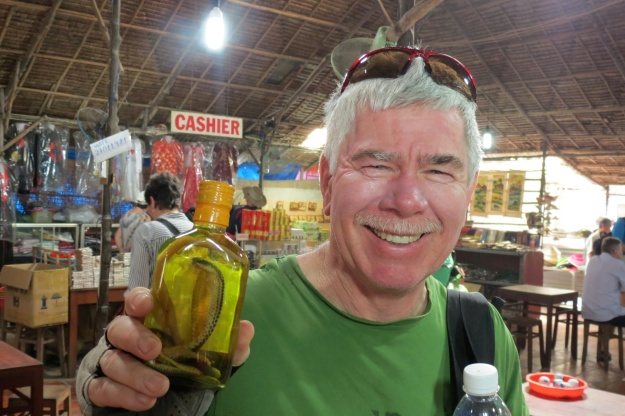
Ate something questionable? Try this! (Photo by Rob Mudie)
Clothing
What to take can be a challenge. We packed largely for biking in the “average” climate. Turns out we were under-dressed for the cool conditions in the north, and our polyester biking gear was too hot for the steamy heat down south. Check the temperatures in Hanoi and Saigon. Cheryl wished she’d brought some compact down, and a couple of extra light pants and long-sleeved tops for the North. As you may know, the local inhabitants wear long pants and sleeves, even when it gets warm; tourists are obvious because they wear shorts and singlets, even when it’s chilly. The cycling rain gear we brought turned out to be too warm; we did better with the semi-disposable ponchos we picked up in Vietnam for a dollar. After the first day, we eschewed our heavy lace-up shoes in favour of Keen’s sandals; they were cooler and dried out more quickly after a rain. Even the locals mostly rode in flip-flops, rain or shine.
Finally, after Cheryl’s run-in with a pickpocket in Hanoi on Day One, we wished we had more clothes with zippered or concealed pockets – anything to make it easy to spread our cards and cash around.
Whenever we stayed two days in the same hotel, we were usually able to wash a few light clothes and have them dry before we checked out. Laundry prices at the hotels were often fairly high, although at one or two locations that charged by the kilogram instead of per piece, we found them very reasonable. And the clothes always came back neatly folded, flower scented, and well before the promised time.
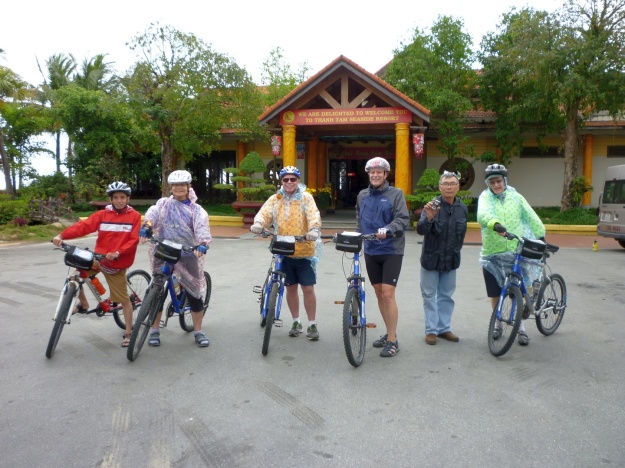
Wet-weather riding increases the need for laundry facilities.
Cycling Equipment
Taking your own bike helmets is absolutely necessary. In some countries, bike tour companies have the odd spare for those without. In Vietnam, even some of our guides rode without helmets. Paul had taken a spare to Vietnam and left it with our last guide, who was most appreciative. Biking gloves were also a good idea, although not essential. And they did get very sweaty in the steamy south.
Since distances were relatively short, we decided not to take our gel seat covers. Some of the tour operators supplied bikes with gel covers included. The bikes themselves were mostly decent Trek mountain bikes; the ones in the hilly north were almost brand new and had disc brakes; in the flat south, they were older and less well equipped.
We had also taken rechargeable blinking lights for front and back, but ended up not using them. While we use them at home, especially when riding country roads with higher speed limits, we decided not to in Vietnam. In the traffic conditions we usually encountered, we suspected they might have been more distracting than helpful. Bright clothing was useful; for one thing, it alerted drivers that we were tourists, unfamiliar with the local driving customs. It also helped us keep track of our group.

Even with colour, the Mekong Delta trails presented challenges in following.
Unlike trips in Europe, the bikes did not have carriers or panniers, only a small pouch on the handlebars. However, the van was seldom far away, so we could generally leave extra clothing there and retrieve it if needed. However, we were glad we’d brought a couple of small packs to wear. The operators also supplied water bottles for the rides, but we were glad we’d also brought our own – especially handy on non-ride days. Given the frequent advice not to drink tap water, we were always buying large bottles of water and refilling our own. Or drinking the beer, which was often cheaper.
Perhaps the most useful thing we took were rear-view mirrors that attached in seconds with Velcro. None of the bicycles came with mirrors, but every scooter on the road had two, and we soon knew why. For about US$4 each, the mirrors were well worth it. Two per bike wouldn’t have been remiss.
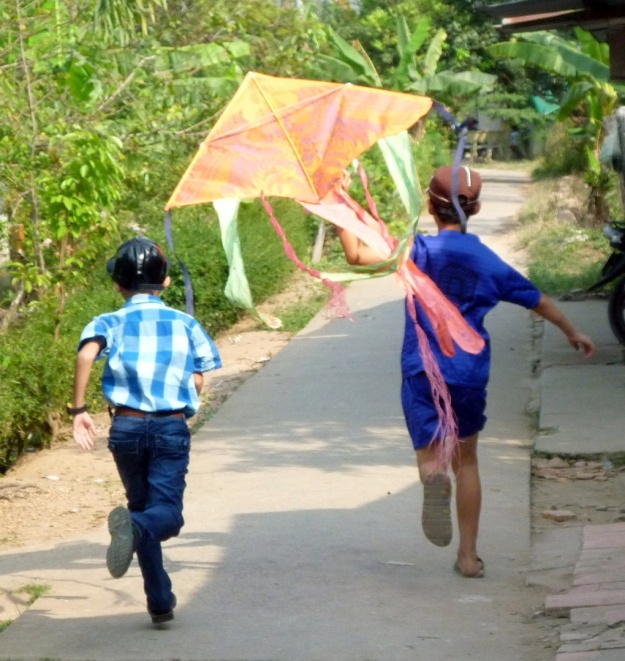
These paths left little room for passing.
Money, Cards, & Internet
Since almost everything was included on this tour, the money we needed was primarily for drinks, tips, and extras. Since many of the smaller shops didn’t take cards, a bit of cash was essential and that in Vietnamese Dong. To keep our wallets filled, we relied on debit cards at ATMs. We had no trouble finding ATMs, although perhaps only half of them worked with our cards. One in our group had a “special” card that was non-standard. She never got it to work, but fortunately she had another. Advice when traveling: always have more than one type of card, and keep them separate, just in case. When Cheryl had hers stolen, she still had another – and I had two as well. The limits on ATM withdrawals were quite low, but then, we didn’t need much money. Larger hotels and restaurants accepted most credit cards.
The free Internet in every hotel was excellent without exception: fast, ubiquitous, and reliable – much better than we later experienced in Australia. We had no problems backing up photos to the cloud – until we left Vietnam. Reminder: don’t forget your power-plug adapter.

Water puppets in Hanoi. (Photo by Rob Mudie)
Tips
Tipping provided us with considerable confusion, and our group had several lengthy discussions on what to do. Tipping porters at hotels and airports was easy enough, usually around US$1. At meals, we only paid for drinks, and tipped on that amount. However, all the set meals were included in the tour price, as were hotel stays, but we never figured out how tips should be handled on these items. Mostly we just muddled through.
The real confusion came with tipping cycle guides and drivers. We received three different guidelines from the tour operator and the booking company. Some implied a sliding scale, depending upon the size of the group, others did not. None were clear on whether the suggested amounts were a total for guides and drivers, or an amount for each. In the end, our group held lengthy discussions and came up with a per-day per-couple minimum for guides and a smaller minimum for drivers. Then, at the end of each segment, Rob would collect the amounts in an envelope and present it to the service provider. Even that didn’t go as smoothly as hoped. Most of the time – but not always – there were two drivers, one for the van, one for the bike truck. Drivers sometimes came and went without notice; twice, last minute changes of plan had us miss our farewells with a driver. The line between drivers and guides was often blurred: on one leg, our cycle guide spoke little English, so a second attractions guide rode with us, and the first guide doubled as van driver. One day, our cycle guide was under the weather, so, he brought in cyclist friend and sat the ride out. In the end, we did the best we could. We tried to remember that everyone we dealt with worked long and hard, and none were overpaid. Tips were always welcome, whether in dong or US dollars.

Our guide and drivers make tea, while we admire the view.
Cycling Protocol
Finally, it would have helped if we’d reviewed our cycling protocols. The six of us had often ridden together at home as part of a larger group, and we should have known better. Somehow, in the excitement of a foreign country, we forgot some of our practices. Especially in the Mekong Delta, the trails turned and branched endlessly, and it was very easy to miss a turn. If each of us had stopped at every decision point until we could see the following rider knew where to go, we would never have become separated. As it was, we lost members twice, both times for more than twenty minutes – which seems like an eternity when you’re listening to crickets. We will allow that following the protocol can be challenging here, as there are so many decision points. So, don’t hesitate to ask your guide to slow down, especially if you want to stop to take photos. At day’s end, we were all reunited, and after unruffling a few feathers, had a good laugh about it all.

There’s lots to distract an avid photographer. “Which way’d they go?”
Bon Voyage!
We trust you’ve found these thoughts useful in planning your cycle trip to Vietnam. Have a great time, and let us know how it went.
More Information
- Lac Viet – our tour operator
- Biketours.com – the US company that did all the arrangements
- Average Weather for Hanoi (WeatherSpark)
- Vietnam Embassies & Consulates
- Rabies Vaccination (WHO)
- Dukoral Vaccine (MedBroadcast)
- Insect Repellent for Clothing (REI)
- Velcro-attach Cycling Mirror (MEC) – not sure where else you can get these
- Vietnam Power & Plugs
- KRIËGER Travel Plug Adapter Kit (Amazon) – we like this one
- Tipping in Vietnam (Who To Tip)

Related Posts
- Cycling in Vietnam – Hanoi
- Cycling in Vietnam – The North outside Hanoi
- Cycling in Vietnam – Central: Hue & Hoi An
- Cycling in Vietnam: Saigon & the Mekong
- Avoiding Travel Scams without Avoiding Travel
- Why Travel Alone?
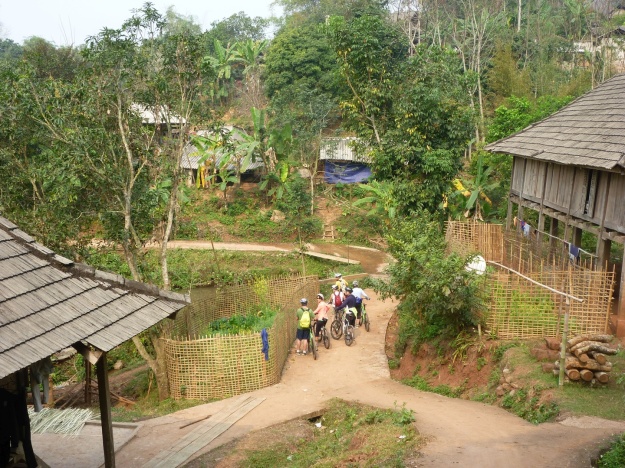
Rest stop in a northern village.

